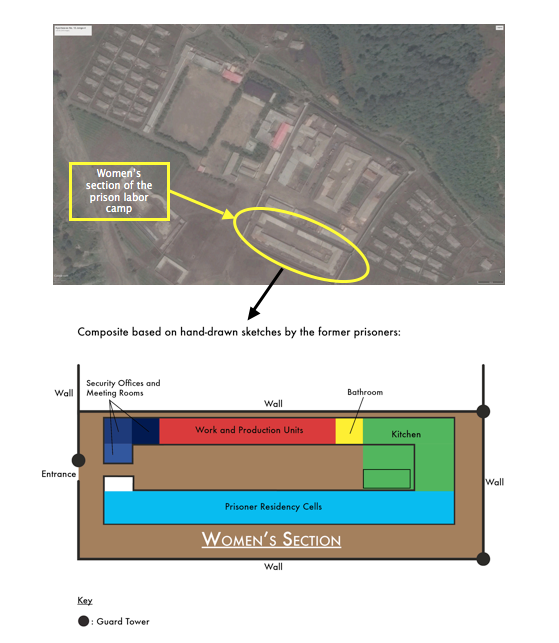|
By Christopher Motola, HRNK Research Intern November 2015 The Hidden Gulag series by David Hawk (for HRNK) has been a benchmark in the field of human rights research on North Korea, primarily because of its synthesis of former prisoner testimony and satellite imagery of North Korea’s prison camps. At the time (in the early 2000s), this was a union that was much more difficult to bring about than it appeared. Previously, the only way to obtain open source satellite images of North Korea was through two private commercial satellite companies. Before these could even be obtained, however, Hawk needed to know where to look. Former North Korean prisoners in Seoul had to identify where the prison camps in North Korea were located. In order to do this, they used old declassified military maps of North Korea, which Hawk had to order and then ship to South Korea. It was only after these maps were shipped back to the United States with the camp locations marked that modern commercial satellite footage could be ordered. This new footage was then sent back to South Korea, where camp locations would be confirmed by the former prisoners. Often times, the imagery would slightly miss the mark, showing imagery of the nearest town rather than the camp itself, in which case the process had to be repeated. As David Hawk recalls, “It was a very arduous process. It took an extra six months to do this process of getting the satellite imagery.” However, the satellite images were crucial. The imagery provided concrete and undeniable evidence of what was going on in North Korea, reinforcing the credibility of the testimonies of these many former prisoners. This combination of detailed testimony and precise satellite imagery made the original Hidden Gulag report in 2003 a crucial milestone. Now, the progression of time has brought with it a progression in technology. Hawk and others no longer have to rely on large paper maps that must be shipped back and forth for months. The advent of technologies like Google Earth has made this struggle a thing of the past. “After Google Earth came online, it became very, very easy. In fact, the Korean language version of Google Earth is very good and very precise. If you take the English language version and type in a romanized Korean name, you don’t get very much. But if you’re working off the Korean language Hangul script in Google Earth, and you type that in, it just zooms right to it. It’s now very, very easy for North Koreans to go online and look at their hometowns and places they visited, and, in this case, the prison camps where they were detained and subjected to forced labor. North Korea is obviously an isolated nation, and it is important to recognize the unique ways in which information flows out of it. In the past, North Korea had an almost complete and total information blackout. As a result, human rights researchers such as David Hawk found themselves in the “odd situation, only being able to find out about human rights violations...between two to five years after violations occur,” when the prisoners finally escape. As a result, “we’re constantly playing catch-up,” Hawk laments. This flow of new information is one reason it is important to have new updates to Hidden Gulag. In the past few years, however, the flow of information out of North Korea has become more substantial. For instance, cell phones are often smuggled into North Korea and are used by media and escapees alike in order to contact those still residing in North Korea. Defections, despite recent regime crackdowns, have become much more efficient. When a defection is purchased, one can arrive in South Korea in a matter of months, weeks, or even days, depending on the price paid to brokers for the defection. All of this, when combined with the precise and instantaneous nature of satellite technologies, has made the process of obtaining information from inside North Korea much easier for those like David Hawk. In the most recent update, Hidden Gulag IV: Gender Repression & Prisoner Disappearances, Hawk was able to confirm the addition of a women’s section to Jongo-ri, a prison that was male-exclusive at the time of the previous Hidden Gulag updates. HRNK and David Hawk also worked with AllSource Analysis (ASA), a satellite imagery analysis company, to supplement Google Earth and former prisoner testimony. ASA provided high-resolution image maps of North Korea’s prison camps, something not available on Google Earth. Going forward, satellite imagery technology, combined with analysis from HRNK’s partner, ASA, will only become more precise, allowing Hawk and others to do more accurate work, and help provide a clearer picture of the human rights abuses inside North Korea. If you’re interested in David Hawk’s work for HRNK, watch this excerpt from our interview with him: https://www.youtube.com/watch?v=QgsTlbJr5Bg.
To access the Hidden Gulag series and other HRNK publications, click here.
0 Comments
Leave a Reply. |
DedicationHRNK staff members and interns wish to dedicate this program to our colleagues Katty Chi and Miran Song. Categories
All
Archives
June 2024
Categories
All
|



 RSS Feed
RSS Feed
